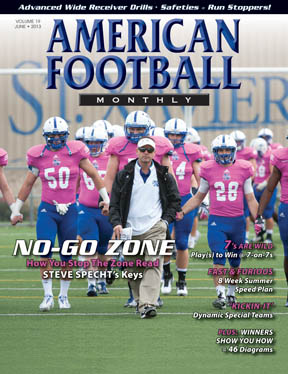Article CategoriesAFM Magazine
|
Starting from the Bottom – A guide to the season’s hottest cleats.by: John LeonhardtCopywriter, Foot Locker, Inc. © More from this issue As a coach dialing up new schemes and organizing practice routines for the upcoming season, you may not have had time to see what’s in store for this year’s selection of football cleats. When an athlete comes to you with questions on cleats, this guide will help you steer him in the right direction. Over the past few years, players big and small have been leaning toward cleats that are lighter and faster. The game – now more than ever - relies on speed. A transformation of new offensive systems, such as the read option, places faster, more agile athletes at quarterback, resulting in more backfield speed than we’ve ever seen before. As a result, defenses also need that ability to quickly close the gap on ball carriers in the open field. That trend doesn’t seem to be changing. The cleats are continuing to get lighter,....The full article can only be seen by subscribers.
|
|
|||||||
| HOME |
MAGAZINE |
SUBSCRIBE | ONLINE COLUMNISTS | COACHING VIDEOS |
Copyright 2026, AmericanFootballMonthly.com
All Rights Reserved





